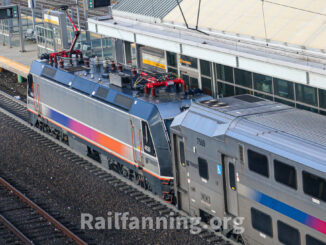Six people were killed Tuesday when an Amtrak train from Washington to New York derailed in Philadelphia.
“We are deeply saddened by the loss of life from Amtrak Northeast Regional Train 188 that derailed north of Philadelphia Tuesday evening,” Amtrak said in a statement.
Amtrak said there were 238 passengers and five crewmembers on the train at the time of the crash. At least 140 people were taken to area hospitals, some in critical condition, according to news reports.
Amtrak service on the Northeast Corridor between New York and Philadelphia has been suspended.




